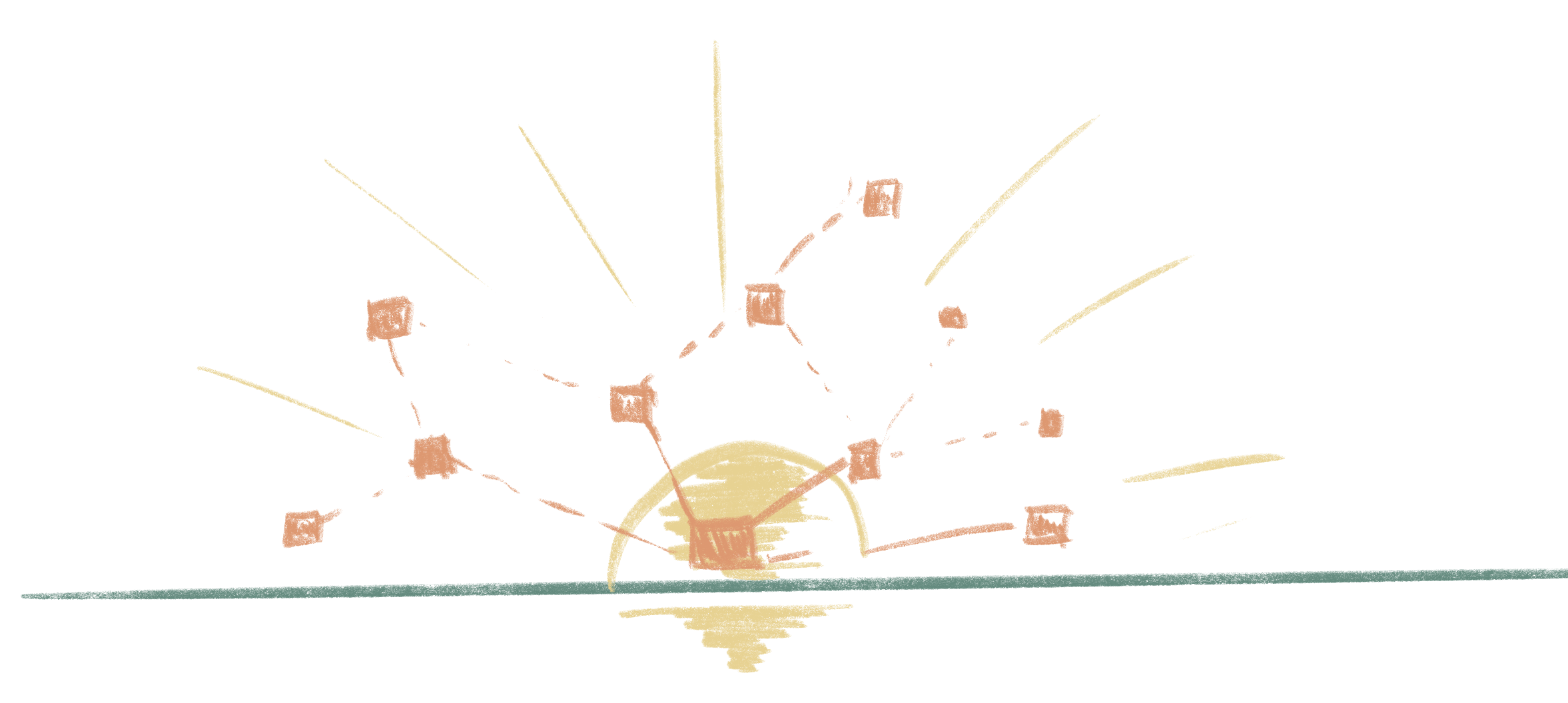Introduction to Web Apps
1 A Short History of the Web
 Learning Outcomes
Learning Outcomes
When you have completed this chapter, you will be able to:
- Sketch a timeline of key web development milestones and relate them to modern web technologies.
Here’s a little history of the World Wide Web. It’s not meant to be exhaustive, but I’ve taken care to highlight developments that are relevant to the technologies we discuss in this textbook.
The Dawn of the Internet

The Internet went online in the late 1980’s after a merger between two earlier networks: The United States Department of Defence’s ARPANET and the United States National Science Foundation’s NSFNet. The general public started to become aware of the Internet in 1989 when the first Internet Service Providers (ISPs) came on line.
At this time, there was no World Wide Web. The internet consisted mostly of a collection of text-based services including email, the Usenet news bulletin board, file sharing systems known as Gopher and FTP (File Transfer Protocol), and a collection of other privately operated bulletin board systems. The Internet was not easy to access or use and was mostly populated by scientists, people in technical positions, and hobbyists.
The Early Years
The Hyper-text Transfer Protocol (HTTP) that underlines web communication and the Hyper-text Markup Language (HTML) that goes with it were first developed around 1990 at the European Council for Nuclear Research (CERN) from ideas pioneered by Tim Berners-Lee. The idea was to present text and image files in a formatted, user-friendly way, and to link documents to one another using hyper-links.
In 1993, the Mosaic web browser was the first app to download images and text together and lay them out in the same document, like a printed magazine page. Mosaic was the spark that popularized the web. The Mosaic browser quickly spawned an even more popular successor named Netscape Navigator, from which Mozilla Firefox is descended.
The 1990’s Boom

A series of important developments followed as the popularity of the Web grew. In 1994 the World Wide Web Consortium (W3C) was formed to standardize HTML. In 1995 the LAMP stack (Linux, Apache, MySQL and PHP) was developed and became the most popular web platform for many years. At the same time, Netscape Navigator began to support dynamic content on web pages through JavaScript and Java Applets (now deprecated). A popular animation of Duke, the Java mascot, slowly tumbling across web pages that used to be static blew everyone away (see Figure 1).
The mid-1990s saw the rapid rise of America Online (AOL), which brought email and the web to the masses. Popular browser home pages such as Yahoo, Excite, and Lycos served as web directories, news sites, and early search engines. Web page hosting services such as geocities and tripod allowed led to a proliferation of personal web pages.
Web technologies continued to develop. The HTML 4 standard, released by the W3C in 1997, introduced the Cascading Style Sheets (CSS) styling language. In 1998, CSS 3 added media queries, which were eventually to become the backbone of Responsive Web Design. Then in 1999, Microsoft introduced the XMLHttpRequest Application Programmer Interface (API) into its browsers, which allowed content to be fetched from web servers without reloading the current web page. The XMLHttpRequest API would eventually become the backbone of modern web apps using a set of techniques known as Asynchronous JavaScript and XML (AJAX).
The 2000’s: Web 2.0
The term Web 2.0 refers to the proliferation of websites based on user-generated content (a.k.a. social media sites) that began in the early 2000’s, enabled by developments in HTML, CSS, and JavaScript APIs. The term AJAX was coined in 2005 as web developers recognized the potential of the XMLHttpRequest API to revolutionize the user experience. Myspace, YouTube, and Facebook were early examples of successful Web 2.0 sites.
It was also during the 2000’s that modern browsers like Chrome, Firefox, and Safari first made their appearance and began to dominate, and alternatives to LAMP on the server side began to appear, such as Java Enterprise Edition, Microsoft’s ASP.NET, and Node.js (server-side JavaScript).
The 2010’s: The Mobile Web
In 2007, Apple released the first smartphone and web developers turned their attention to design for mobile phones, tablets, and other computing devices. The term Mobile First Design was coined in 2009 to popularize the idea of designing with mobile users in mind. The term Responsive Web Design was coined in 2011 to popularize the use of CSS3 Media Queries to allow a web page to adapt itself to whatever screen it finds itself on.
Services that used to be presented on web pages began to be repackaged as apps for smartphones, often reusing the same HTML, CSS, and JavaScript code and communicating with the same server as their web app predecessors, but delivered in a repackaged way to look like a native phone app.
The Web Today
The web continues to evolve today, although the pace of new development of HTML, CSS, and JavaScript has slowed and stabilized somewhat. HTML5 was officially released in 2014 and remains the most recent major update for that language. CSS3 features were gradually rolled out in major browsers through the 2010s.
The latest major update to JavaScript was in 2015, introducing the Fetch API for AJAX as an alternative for XMLHttpRequest and adding support for classes to enable traditional Object-Oriented Programming. But the importance of JavaScript continues to grow, with the popularity of Node.js and the REACT web development framework, and with the recent development of TypeScript, a new version of JavaScript that is rapidly gaining in popularity.
The most recent major update to PHP was version 8, released in 2020. PHP remains the most used language on the server side of the world’s web sites, and a significant number of developers still report extensive PHP development work, but it’s fair to say that its importance is declining as most large scale web development projects are now built using alternatives to the LAMP stack. Nevertheless, many small-scale web projects and prototypes are still completed in PHP and the language continues to be actively updated and improved.
You may also have heard talk of Web 3 or Web 3.0, a new approach to web app architecture based on decentralization, crypto-currencies, blockchain, etc. But at this point, the concept remains ill-defined, has attracted a number of critics, and may not result in much real change to the nature of the web.


Feedback/Errata